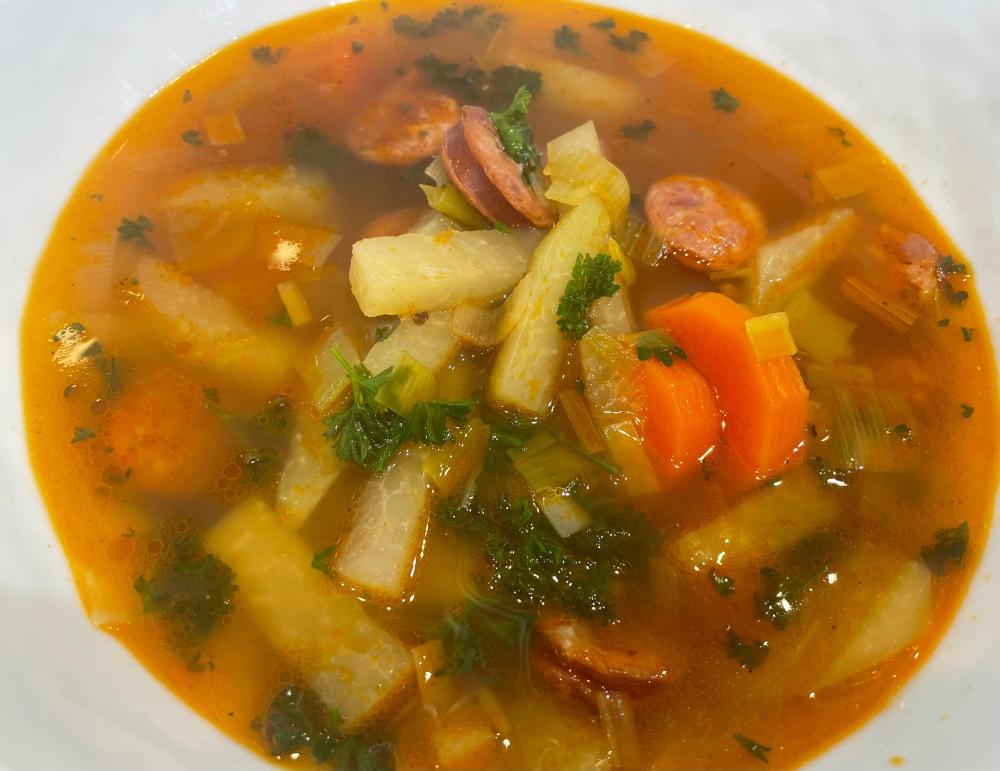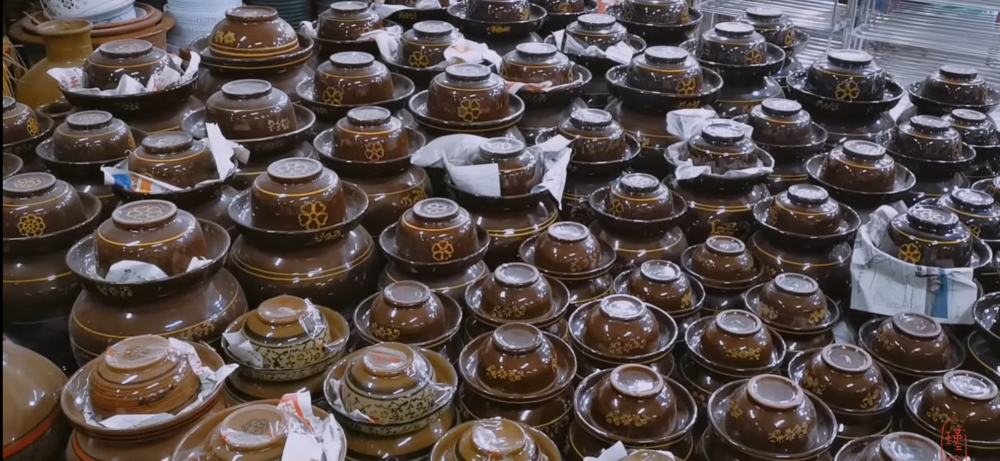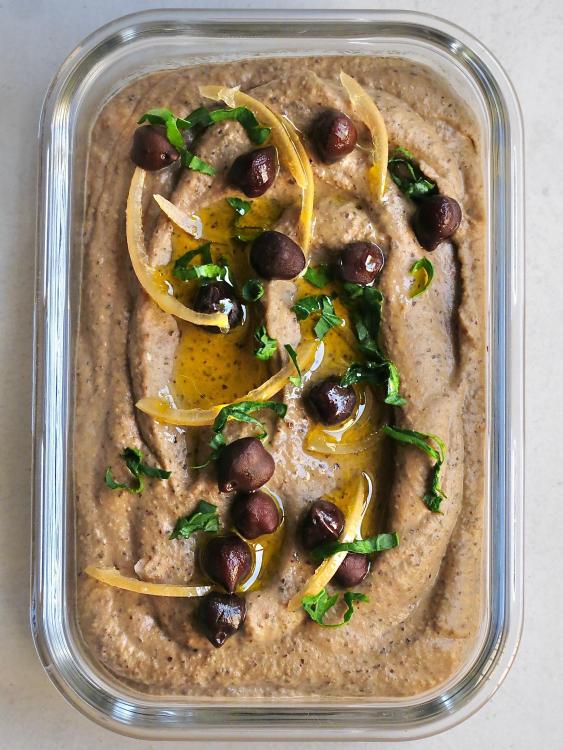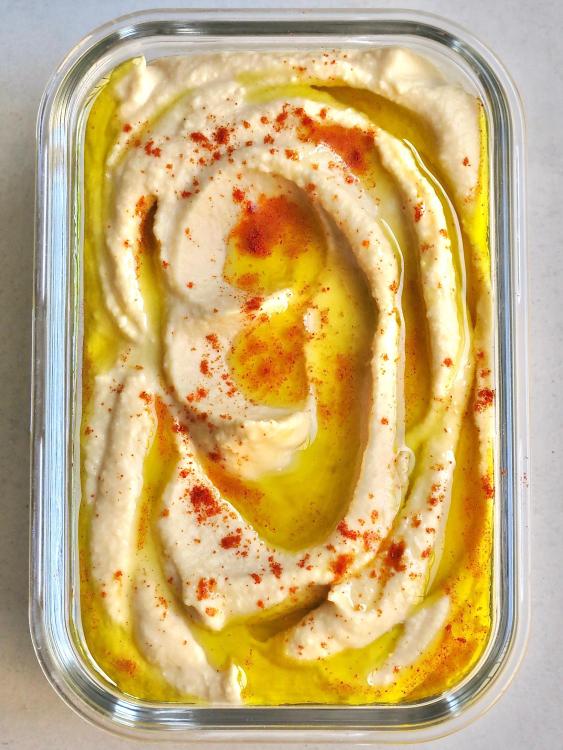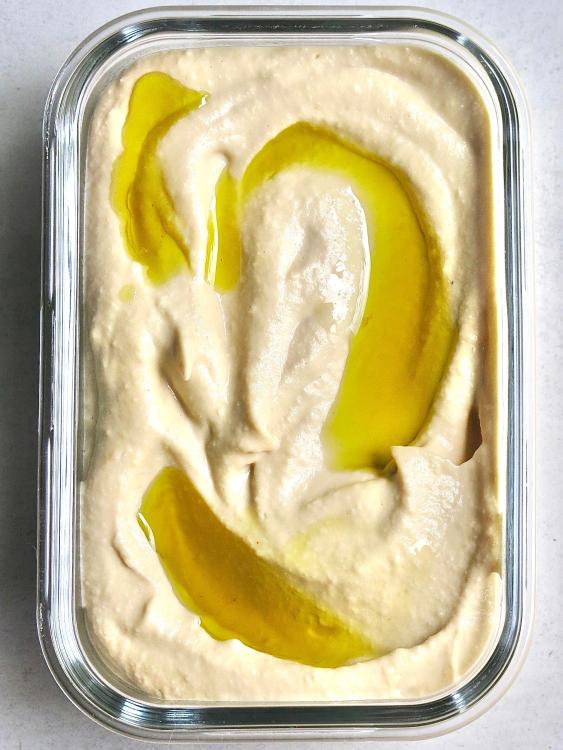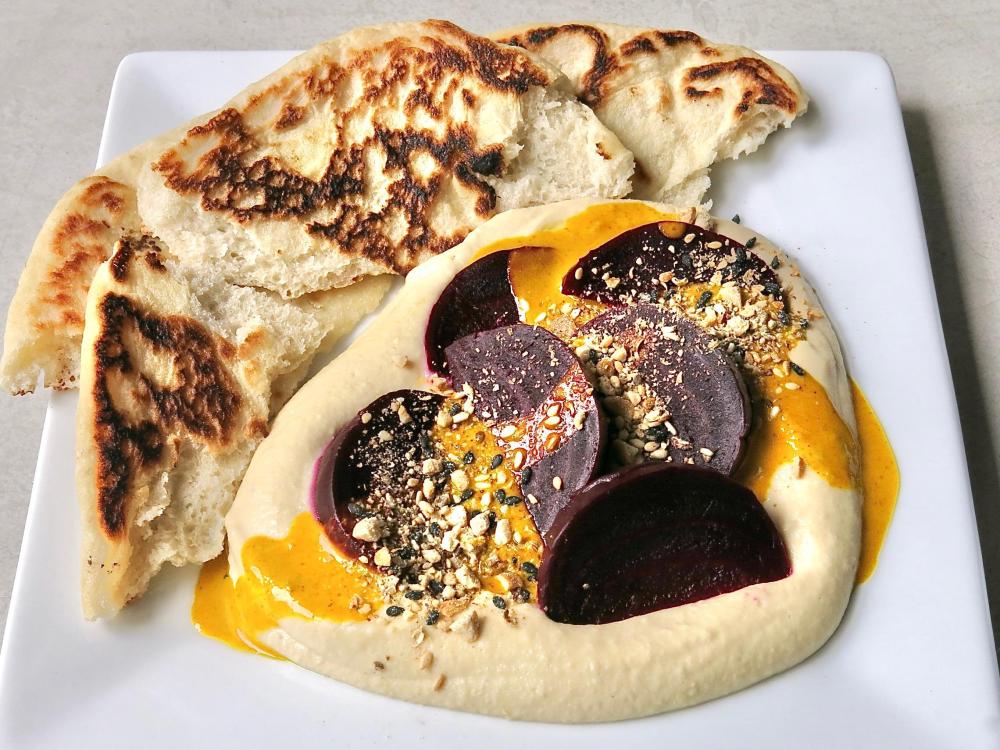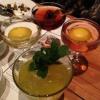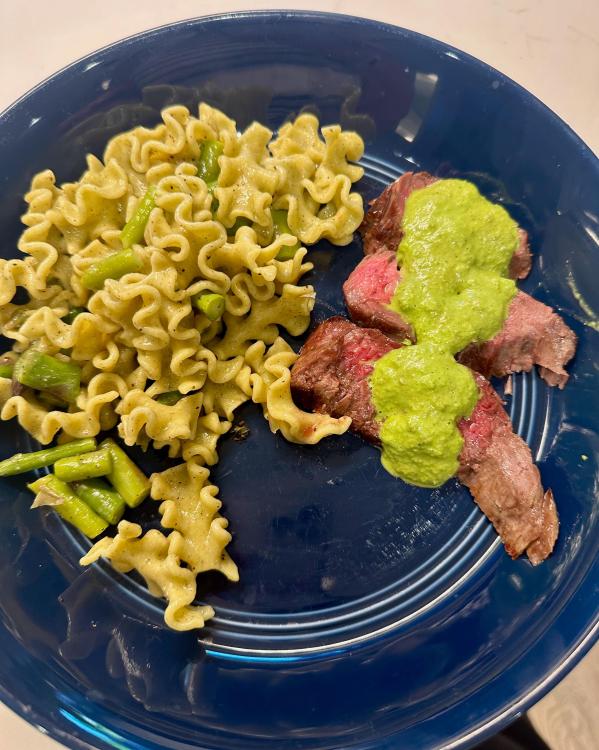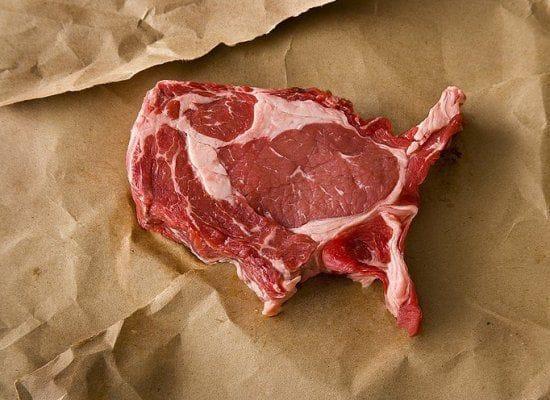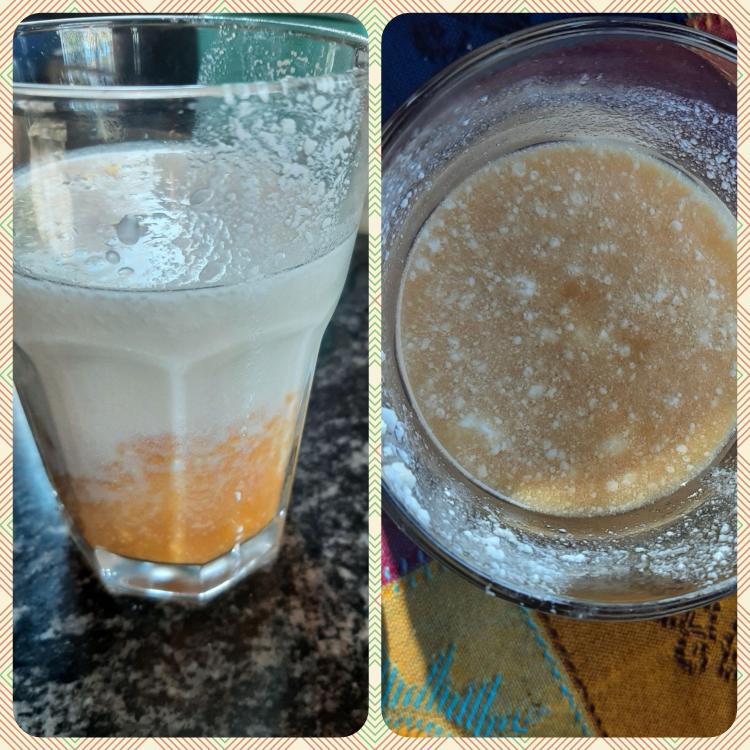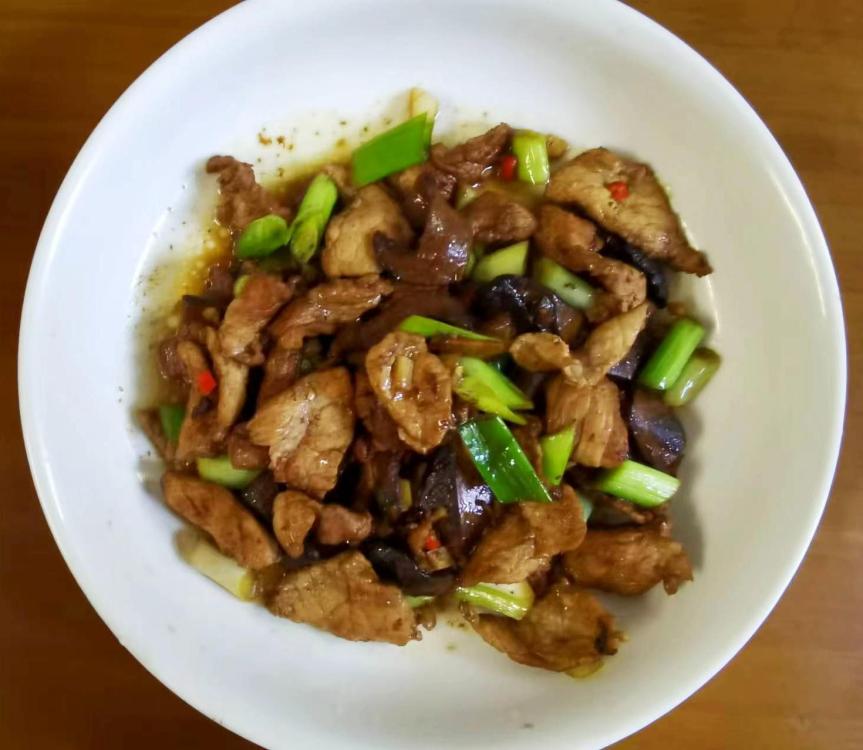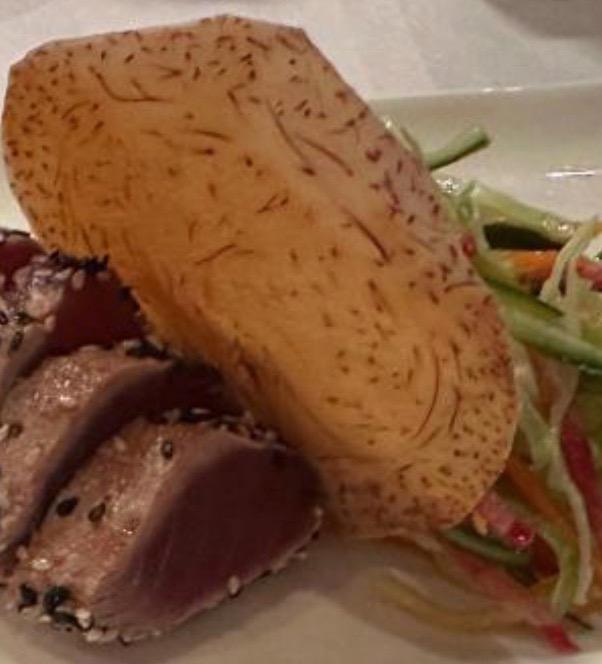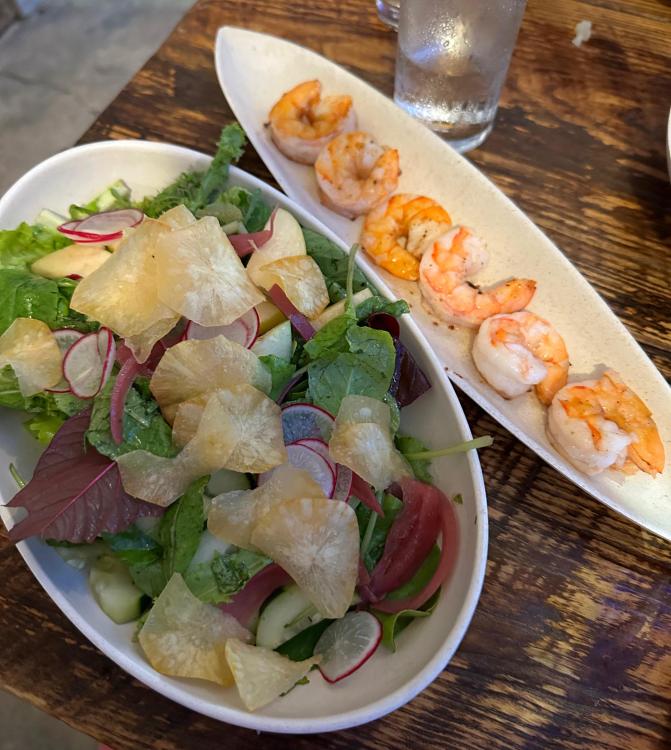-
Welcome to the eG Forums, a service of the eGullet Society for Culinary Arts & Letters. The Society is a 501(c)3 not-for-profit organization dedicated to the advancement of the culinary arts. These advertising-free forums are provided free of charge through donations from Society members. Anyone may read the forums, but to post you must create a free account.
All Activity
- Today
-
Quick and simple stew with kohlrabi, carrots, leeks, linguica, bay leaves, juniper berries and parsley cooked in vegetable broth
-
Husband’s and my basic lunch of Australian beef sausage in a piece of baguette with green tomato pickles. I am always trying different bakeries in the hope of finding the true tasting French baguette. (Made in France) It is the flour, it’s different from French flour over here but I live in hope I may one day find a bakery, of which there are many, that imports French flour to make their baguettes. (Of course ‘why would they’ )It is quite a few years since I’ve been back to France but having spent quite sometime there, the memory of true baguette stays with me. There is a particular chain of bakeries here that I had high hopes for, Laurent Bakery which has very good bread and French cakes but alas still not the flavour, texture I remember. All that said, this particular lunch bread was good, made with a sprinkle of semolina for extra crunch. I would like to be able to make bread like our AnnT but so far I haven’t been able to.
-
How often could one say this about pasta? I love pasta, but this sounds especially special. I want some!! Thanks for the reminder that not all pastas are created equal.
-
I had no idea (no surprise there), so thanks for the info. However, I must be in tune with the universe, or something—I ate hummus, kalamata olives, and Wasa crackers for lunch today.
-
I know nothing about Chinese crocks or Chinese fermentation but I would think that glazed would be better provided the glaze is lead-free, just for sanitation purposes. It is important to understand the difference between low-fired earthenware and high-fired stoneware. The former is not vitrified (using the term vitrified loosely) - there is significant porosity remaining in the clay body. Although this might promote breathing, it will more likely allow leakage of the liquid through the clay. The whole point of lacto-fermentation is to exclude air so I see no reason why you would want the pot to breathe. Stoneware should have little or no porosity left in the clay after firing (not always the case in the real world). This means it won't breathe, even if unglazed. You will just have a surface that is harder to clean. Unless you are making vinegar, you want a water lock to exclude air so the contents ferment and to inhibit the formation of kahm yeast. One thing I have found with water locks is that changing temperature can allow the contents to expand and contract and that can cause water to suck out of the lock into the jar. Keeping a consistent temperature is good. The jars in your photo seem to have pretty deep locks, which is ideal. Keep water in them but not so full that the water sucks into the crock. I have had the water lock on my sauerkraut crock go dry and it doesn't seem really harmful since there isn't a lot of airflow.
- 1 reply
-
- 1
-

- Yesterday
-
My bread definitely might not perform the same. But knowing that procedure is helpful because it suggests something about what's necessary to melt the cheese. One thing I did notice is that it seemed like I was never at risk of overcooking the sandwich. On my gas stove sometimes while trying to melt the cheese I end up burning the bread and that never seemed to be a danger.
-
For a simple cheese sandwich, cold ingredients grilled at 350F for 3 to 4 minutes per side works fine. But that's with regular bread. (I usually put butter in the pan and plop the sandwich into liquid butter instead of trying to spread butter on the bread.) I am not picking on your bread, but it just may not perform the same.
-
Perhaps the almond bread isn't "great" for this application, but it makes a decent sandwich and dietary constraints make it one of the best options. And in any case, that's the problem at hand. I don't know if a wheat bread process is radically different. I recall encountering similar issues with getting the cheese to melt when the bread browns. McGee says Maillard browning "becomes noticeable" around 230 F and has a table that lists it as happening at 250 F. In fact, 250 F was the temperature I dropped to when browning was too fast at 325 F. I don't find that I'm particularly enlightened---my recalled temperature thresholds seemed to be basically right. Maybe what I need to understand is not how browning happens but how the cheese melts. Note that I'm using a cheddar which is not a fabulous melter but is an OK melter---and it does melt. Most better-melting cheese are too bland and making my own processed cheese with sodium citrate is too much trouble for this (and also my wife doesn't like that kind of processed cheese). The idea of microwaving the cheese first seems promising, though I usually butter the bread. What stovetop conditions are needed to melt the cheese? I could cover the pan and heat below browning temperature to soften the cheese, then uncover it and brown both sides, perhaps.
-
I've been having my eye on getting myself a Chinese pickling crock/jar. Had a few questions on the subject and thought I would ask you all. 1. I've seen jars with water locks and I've seen jars without water locks. Are some pickles suited for one jar over the other? Why pick a jar without a water lock? Is it just a budget/economical consideration? 2. I've heard whispers of a preference for un-glazed ceramic crocks over glazed or glass because, they claim, it's allows the ferment to "breath". Is there anything to this? I would assume the water lock allows for breathing and the un-glazed ceramic would be a home for pathogens. But I can't deny that I'm interested in it. Would appreciate any other thoughts and information you may be willing to share. Thanks!
-

Cooking from "Sunday Suppers at Lucques" by Suzanne Goin
FrogPrincesse replied to a topic in Cooking
For the main course for Mother's Day, I picked another dish from the book, the duck braised in Banyuls which I had last made a while back but not documented here. It's more involved than the asparagus dish but all the steps are easy. The most complicated step is probably finding the wine, which is more or less the French equivalent of port (but less sweet and more subtle, less heavy). Luckily a local wine shop happened to have it. It started with duck legs from Mary's (I picked large ones as recommended in the book). They get sprinkled with thyme leaves, orange zest, black pepper and go in the fridge for a few hours (overnight preferably). The next day you dice some onions, carrots, fennel. Meanwhile the duck gets sprinkled with salt and sauteed until brown and crispy. It's set aside, and the vegetables (+thyme sprigs, bay leaf) are cooked in a couple of spoonfuls of the duck fat. The pot is deglazed with balsamic and the Banyuls wine. The liquid is boiled, reduced by half, and then stock is added (I used duck stock because I happened to have some in my freezer from a previous cooking project). The duck legs are added back, and off they go to the 325F for 2.5 hours. The next day, the sauce is defatted (you are also supposed to remove the vegetables but I always leave them in), reduced as needed, and the duck is browned in a 400F oven. In the book she serves it with a turnip-parsnip gratin. I went with a traditional gratin dauphinois (Les Halles / Bourdain style) and served it with a bottle of rustic mourvedre. Everyone seemed happy. Going into the oven After 2.5 hours in the oven Plated -

Help please! Looking for a Chinese pickle jar in northern New Jersey
Burmese Days replied to a topic in Kitchen Consumer
This is great. I hope it's still up to date because I was planning on taking pottery lessons to make my own instead of paying the absurd prices online. -
I had never seen anything like it either. And I loved the philosophy of not wanting to let anything go into waste, and transforming it into delicious jams! There are so many types of fruit in Hawaii that aren't available commercially, it makes for some very unique jams for sure.
-
Today, May 13, is International Hummus Day. I guess there's a day for everything! Joe Yonan's book, Cool Beans is this month's book for the online cookbook club I participate in so I'm ready to celebrate with a few hummus recipes (and one bean dip 🙃), all made with Rancho Gordo beans. First up is the Perfectly Simple and Light Hummus, with a sprinkle of smoked paprika. This one is written to use canned chickpeas but I didn't have any so I used the ones I'd cooked. It uses relatively little tahini and no oil in the recipe so I was generous in pouring it on top. Next, we have the Black Chickpea Hummus with Black Garlic and Preserved Lemon. Lots of umami and nutty, earthy flavors in this one, brightened by the preserved lemon which is blended into the hummus and also used as a garnish. The book includes a recipe where this hummus is used as a base for roasted cauliflower that's really good. Today, I made Little Sesame's Creamy, Fluffy Hummus. Little Sesame is a restaurant in DC and is apparently the origin of this recipe. The chickpeas are to be cooked with baking soda to make them super soft. I don't find that Rancho Gordo beans need that so I left it out but gave the beans a good cook. This recipe uses both fresh garlic and garlic confit, slow-cooked in olive oil which adds a note of sweetness and complexity. That same garlicky oil is poured on top to serve and this is indeed a very fluffy, pillowy hummus. Last up is a Harissa-Roasted Carrot and White Bean Dip that I made with Rancho Gordo Alubia Blanca beans. I like the flavors and thought the little beans looked very cute as a garnish. Happy International Hummus Day!
-

China Sichuan Cuisine (in Chinese and English)
Burmese Days replied to a topic in China: Cooking & Baking
Somehow, through all of this research, I completely missed the fact that the primary author, Lu Yi, wrote another Cookbook! A Taste of China Western-Style Chinese Cuisine (Saveurs Chinoises) A cookbook in English and french focusing on Sichuan food for a western audience. Now, I can't quite tell yet if this book is for Chinese restaurant owners in the west or home cooks but I suspect it's the former from preface: "Sichuan Cuisine, Go for It! As China has become the 2nd largest economy, many people expect Chinese cuisine, especially Sichuan cuisine, to step on the world stage. However, the reality is far from satisfactory. Across Europe and the United States, the market share of Chinese cuisine is much lower than that of Mexican, Italian, Japanese, and even Indian and Thai cuisine. As for Sichuan cuisine, its market share is far lower than that of Cantonese cuisine in foreign countries. Why? My first concern is that there is a lack of standards for Chinese cuisine. It is common to have food regulations in the developed countries like the USA. In contrast, most people who run Chinese restaurants overseas do not receive professional training as chefs. In 1994, I ate cold sugar tofu served as "Mapo Tofu" in one of those restaurants. Although, the dish carried the same name of Sichuan cuisine, it was not the same as in China. Because of this, Chinese professional chefs are establishing the Sichuan cuisine standard consisting of 13 criteria, including Standards for Sichuan Cuisine, Standards for Sichuan Pastry and Culinary Standards for Classical Sichuan Dishes. We wish to build the criterion for Chinese cuisine based on this. Secondly, there is a lack of professional managers for Chinese cuisine in the international market. Many people who desire to invest in Chinese restaurants don’t achieve a sound progress because they fail to find a professional manager who is familiar with both Chinese cuisine and foreign languages and laws. Therefore, our school has carried out the strategy of internationalization to train international professional managers since 2005 with internship programs on American Caribbean Cruises and Mediterranean Cruises, in French and Singaporean hotels. Thirdly, there is a big diet difference between Chinese and Western cuisine. I notice foreigners find it difficult to get Chinese ingredients and kitchen utensils and equipment abroad. We use chopsticks whereas foreigners use forks and knives. Can you imagine one eating diced or slivered food with forks and knives? Because of this, we wrote this book to adapt Sichuan cuisine to foreign cooking styles. All the ingredients in this book can be found in your local grocery stores. All the dishes in this book you can make in your kitchen and eat with forks and knives. For instance, to fix the Chengdu Roasted Meat, which is like Twice-Cooked Pork, we have pork belly pieces substituted for pork round slices with skin on, and we roast it with Pixian Chili Bean Paste without stir-frying in a wok. Thus, this dish is more delicious and easily eaten with forks and knives. My Chinese dream is that everyone in the world can enjoy Sichuan cuisine, and that we can buy Pixian Chili Bean Paste in every corner of the world. This book on Sichuan cuisine is one step toward the world stage. That’s what I want to say as foreword. Lu Yi Jan. 5th, 2014 Written in the Xiaoxiu Book Store on the south bank of Lanqiao Bridge in Chengdu." I'll be sourcing this book shortly, but how exciting and fun! And, for those curious, I'm sure you can find this book online with some effort. Expect updates soon. -
Next up was the tropical botanical garden in Onomea Bay. Now Hawaii has some pretty fantastic botanical gardens, but this one takes the cake so to speak. The garden started as a 17-acre plot of land that was purchased in the 1970s by a family that slowly transformed it into their own version of the garden of Eden, preserving the natural beauty as much as possible, and creating trails with a machete through the (already beautiful and lush) existing vegetation to reveal a tiered waterfall, and adding an insane collection of orchids and other tropical plants to the mix (everything grows in Hawaii!). The trails eventually lead to a rugged beach of black rocks which is beautiful in its own right. I could have spent countless hours there exploring and marveling at all the plants. So much beauty! Afterwards, we stopped at Papa’aloa Country Store and Cafe for a late lunch based on the recommendation of our friends. I liked the little store that was selling a lot of local food items, but our lunch of kalua pork tacos was quite underwhelming, and my lilikoi lychee drink a poor choice unless you love sugar and artificial flavors. The ginger beer was a bit better. On the way home we drove down to Laupahoehoe Point, a village located at the end of a ravine that was tragically obliterated during a tsunami in 1946. That place is beautiful but has a very eerie vibe to it. They decided to not reconstruct the village after the tsunami, unlike Hilo, which was rebuild post tsunami. One more stop at Rebecca’s to restock on produce, and we were back home. That night we weren’t very hungry and were happy to snack on leftover poke and fruit.
-
I have never seen such an amazing collections of jams! I love anything passion fruit but the fresh fruits and even the frozen puree are rare to non-existant where we live, which makes it all the more desireable.
-
Today is International Hummus Day so lunch was this Roasted Beet Hummus Bowl with Turmeric Tahini and Peanut Dukkah from Joe Yonan's Cool Beans, made with Little Sesame's Creamy, Fluffy Hummus from the same book, served with the Fluffy (and Crisp) Flatbreads from The Cook You Want To Be.
-
Day 3 (Thursday) We started the day with a nourishing breakfast of (island) eggs & bacon, supplemented by POG (which tends to be very sweet; we liked Sun Tropics a little better than the classic Meadow Gold, although they are very similar) and toast with lilikoi (passion fruit) butter from Liko Lehua (which is located in Hilo). We also had fresh papaya and apple bananas which are more aromatic and creamy than the (Cavendish) bananas we get on the mainland. We decided to go see ‘Akaka Falls that day, which are located north of Hilo and an hour drive from where we were staying at. I didn’t take pictures of the falls but they are spectacular, 300+ foot falls. The trails around the falls are very lush and beautiful, although they were partially closed for renovations during our visit. One of the native fish (o’opu, a type of goby) is apparently able to climb up these very steep and tall falls by using a little suction cup on their bellies, which is quite a feat! After our visit, we drove back to the charming little village of Honomu. On our way, we passed a goat farm, Honomu Goat Dairy, which was unfortunately closed that day. In Honomu, we spent some time with a very friendly blind cat who needed a lot of attention, in a store that had a beautiful selection of vintage glass objects, and finally at Mr Ed’s Bakery which I had never had a chance to visit before, although it’s been in business since 2000. I wasn’t so much interested in the breads; it was the collection of homemade jam that wowed me. As a home jam maker myself, I couldn’t help but marvel at the huge selection of jams (over 150 varieties) made in small batches using the local fruit (you can read more about it here – essentially, he uses whatever fruit his neighbors bring him and isn’t afraid to experiment!). We were handed lots of samples and left with a few jars: the poha berry mentioned in the article, longan for my daughter, and mango lilikoi for my husband. I would have bought more if I didn’t already have a pantry full of jams at home! The creativity of this was inspiring (this is only part of the collection!). 😊
-
Your Daily Sweets: What Are You Making and Baking? (2017 – )
Amy D. replied to a topic in Pastry & Baking
@Pete Fred but those corner bits look the absolutely perfect level of caramelisation. Love a lardy cake - always buy one when I go back home to Gloucestershire. -
The thermocouple that read 260 at the pan center is the same one that read 238 when doing this test on a different pan, and correctly reads at room temperature. Maybe it broke. I haven't done any calibration tests on it and I don't have prior experience with thermocouples. When I got the 260 reading it seemed to be stable. I waited a couple minutes and saw no change. When I say 228 at the "edge" of the pan I mean about 1cm in from the edge of the flat part of the pan that will be in contact with the induction heater---so still over a portion of the pan that should be getting heat. I readily admit that by measuring empty pans I'm measuring the thing that's easy to measure, not the ideal thing. It's not clear to me how the Chefsteps egg recipes rely on the intensity setting, or how things would work differently with a lower intensity. Would the pan fail to keep temperature at low intensity (in the presence of actual food) and therefore the eggs would cook more slowly and at a lower temperature? The interesting thing about the chefsteps recipe is that they provide several ways to get different results at different cooking temperatures ranging from I think 130 F up to 400 F. But what role does that intensity setting play? If I'm following their 350 F or 400 F egg recipe, why might I want to disobey their instructions and use medium or low intensity? I asked Cristel how thick the aluminum is in their pans and got the rather weird answer that it's 1/2" to 3/4" thick. Somehow I doubt that's correct. I wonder if they meant 1/2 cm to 3/4 cm. Anybody have experience with their handle system?
-
The Falk Copper Coeur pans are 75-80% copper. Copper is a highly-conductive material, and the amount and rate of heat that a couple millimeters of it can pass can surprise people. Assuming "slow" intensity... If your Control Freak is reading 250F at steady state and your thermocouple is reading 260F at the pan center at top, and assume you're not in a room that's at 260F+ (science humor), then I would double-check the thermocouple. Or wait a little longer to get to a true steady state (in case the 260F you're reading from your thermocouple is just leftover overshoot. Also, it's valuable to consider that pans without a thermal load in them are interesting to analyze--but it's the behavior of pans with a thermal load (i.e. ingredients, liquids, etc.) in them that is more interesting and important from a cooking perspective. Unfortunately it's significantly trickier to measure temperatures once ingredients are introduced. BTW, when you say that the pan is 228 at the edge, are you talking about the edge of the pan base or the edge of the (what I presume is a frying) pan? If you're talking about the upper ring's edge...yeah, you're going to see a gradient of temperature, especially significant as you move farther away from the induction surface. The value of clad pans (for some types of cooking) is that there's no sharp drop-off of temperature from the bottom of the pan to the sides of the pan. But few if any clad pans are going to give you a tight and even temperature all the way through the sides of the pan. As far as sugar tests go, I would just use the slow intensity. Adding the sugar afterwards may give you a more realistic view of pan evenness on a preheated pan. But both adding the sugar before heating and adding the sugar after reaching a steady state will yield results that may help inform your cooking science. As far as the Chef Steps or other egg recipes go, most people tend to cook when they need to serve or eat food. So most recipes are designed for cooking quickly. You'll note that some egg recipes also call for like a tablespoon of cooking oil (100 kcals!) to be added to a pan before cooking eggs (160-240 kcals) and then doing a water drop test, etc. to find the optimal temperature for quick-cooking of eggs. That's one of the reasons that I cook slowly: I can either use no oil or I can put a little bit of oil on the pan and then wipe almost all of it off using a paper towel, avoiding a bunch of unnecessary calories. But in any case, the Chef Steps recipe is not wrong; it's just a different style of cooking that requires more human involvement but cooks in less time. Also, there are some cooking techniques which intentionally want a food that's cooked significantly more on the outside than on the inside--or that require brief higher-temperature chemical reactions; those cooking techniques are more likely to use the fast intensity or higher temperatures. Most cooking techniques and recipes were designed long before temperature-based cooking (other than a high-temp griddle) was a viable thing in a home kitchen. There's a lot of inertia to continue doing things the way we've done them for a very long time, even when our new tools give us the opportunity for new modalities. The good news is that we can mix a bit of the old and the new--and when you have accurate precision cooking instruments you can rethink the whole enchilada.
-

Cooking from "Sunday Suppers at Lucques" by Suzanne Goin
FrogPrincesse replied to a topic in Cooking
Excellent! I have made a very large portion of the recipes in the book, and have never been disappointed. It is in my top 5 of most used cookbooks. -
The chemical reactions that cook food mostly happen below 175F. For those standing at a stove, it's really convenient to cook at a higher temperature to get faster reactions--but often at the expense of making the food less healthy or requiring more human attention, etc. A quick example of cooking below 175F is a breakfast of steak and eggs. I fill a 24cm pot with water and then sous vide steak at 59C (138F). On another Control Freak, I put a few large eggs in a 20cm saute pan at 59C (138F) as well, using slow intensity, and I cover the pan. This holds the eggs at a temperature where the yellow is still runny but the food is safe to leave on the burner for a while. After the steak is fully cooked (45 minutes to an hour) I come back and turn up the temperature on the eggs to 79C (174F) and let them cook at that higher temperature for 3-4 minutes while I plate the sous vide steak (optionally seared on each side really quickly). Then I plate the deliciously- and consistently-cooked eggs onto the top of the steak. Breakfast is served. As for other foods, I cook veggies and pretty much everything else at <175F temperatures. I sometimes put a little water in the bottom of the pan to help with spreading around the heat--and then drain it from the pan before plating. Sometimes I turn up the temperature for a minute right at the end for charring effect for people who like that. But mostly I just start cooking a half hour or so before people or myself are going to want to eat--and then get up maybe once or twice to stir for a few seconds. And when I do meal prep and prepare several days of meals in advance, I use the same trick. I just put the already-prepared food (which itself usually wasn't quick-cooked originally) into a saute pan and maybe add a little water. Then I put a lid on it and turn the temperature to somewhere between 60C (140F) and 70C (158F) depending on the food and how "hot" I want it to feel when it's done. Then I walk away and it's ready to eat a little while later. [I've even done this with frozen dinners from the grocery store; it's amazing how much better frozen meals taste--especially ones with chicken or the like in them--when warmed up at 60C/140F instead of using the microwave instructions.] Some foods require a little higher temperature. When I make brown rice for example, I basically simmer the rice in water at around 93C/200F. But honestly a good rice cooker is better-optimized for rice, so I reluctantly prefer rice-cooker-cooked rice where available. As for pasta, well, I need ~100C (~212F) for that kind of cooking. And for foods which require a few temperatures or methods, I tend to use a few pans at different temperatures and then combine everything at the end. Being able to hold an already-cooked food at a precise temperature which won't "cook" it any/much more is pretty great to be able to do. But I rarely do "quick cooking" of meats or other foods by using temperatures above 100C. I understand why it's economically important for commercial kitchens to do so. But most of my food is made in advance (either 30-60 minutes before mealtime or in big batches and then reheated on the cooktop).
-
Bavette steak with leftover green sauce from the Peruvian grilled chicken. With it I served pasta with asparagus, loosely inspired by @blue_dolphin's suggestion to make Pasta alla Gricia with Slivered Sugar Snap Peas in the Farmers Market thread. I cooked some locally made lemon parsley pasta (from last year's Farmers Market), and threw in the asparagus at the end to cook it briefly. Drained then mixed it all together butter, parmesan, a bit of pasta cooking water, and a lot of black pepper. We liked and it's something I'd do again, especially with a pasta like this that has its own thing going on.
-
Who's Online 5 Members, 0 Anonymous, 598 Guests (See full list)


